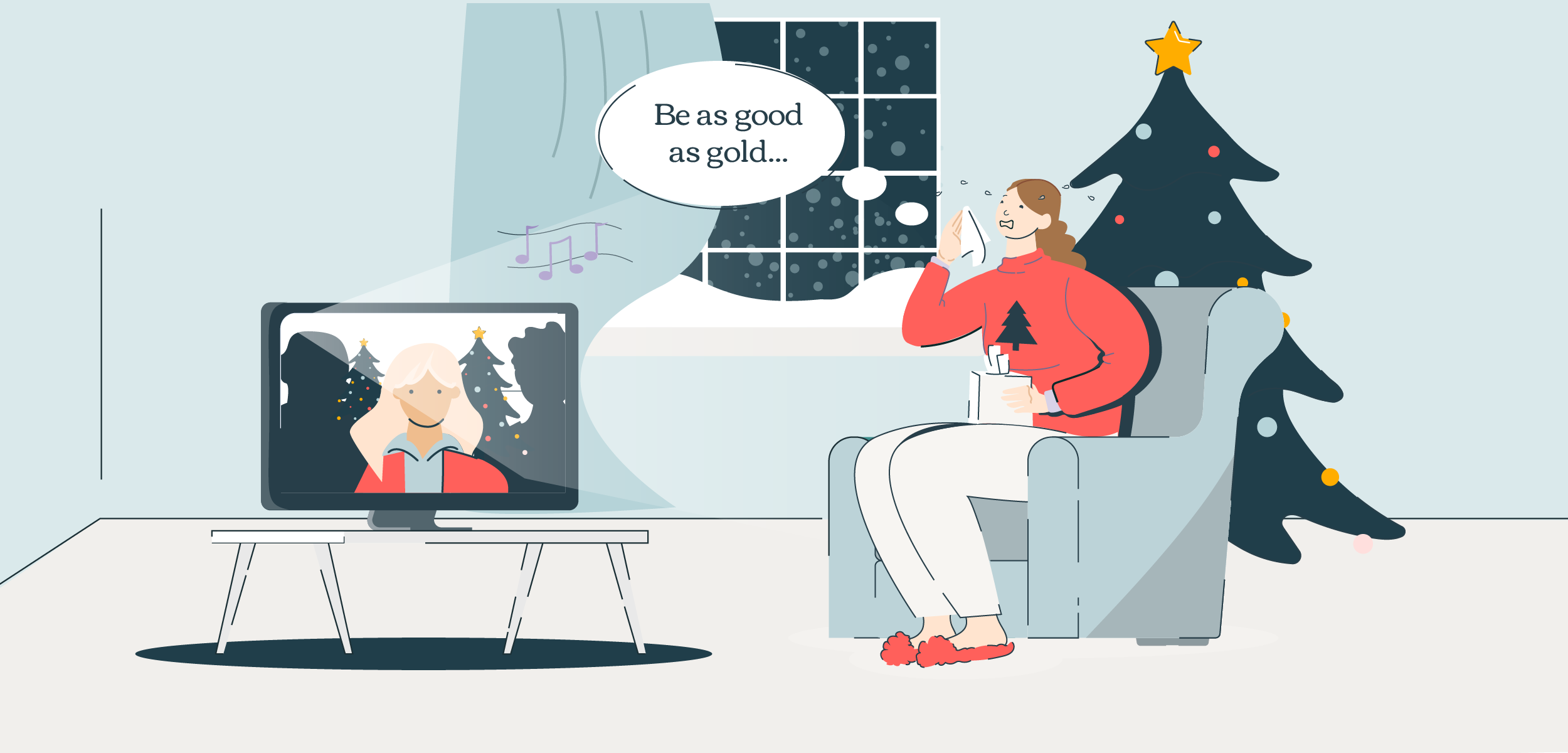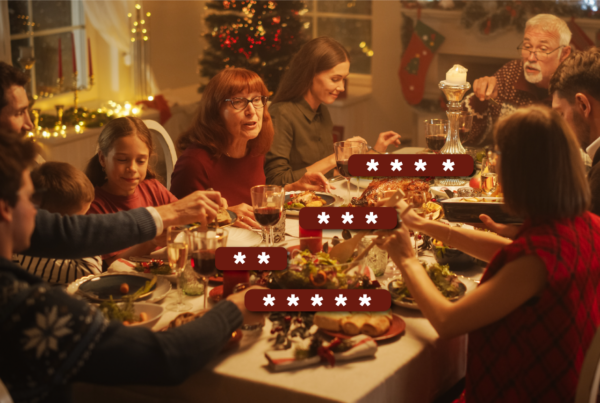Is it just us, or are this year’s crop of Christmas ads a bit of a departure from years gone by?
Less: ‘Go on. Buy all this stuff. Now.’
More: storytelling, reimagining tradition, and an emphasis on things that aren’t rampant consumerism.
See, as a behavioural communications agency, it’s difficult to sit down with a sherry and a mince pie and actually view Christmas ads objectively. Here, our behavioural-science-tinted-specs are never far from the bridges of our noses.
So, what did we see through those glasses? Let’s take a closer look …
Boots ('Give Joy')
What happens?
Boots have been stealthily going about their business of making tip-top Christmas ads and making us wonder if the hot hand fallacy is indeed real. In this, a curious kid sees a toy Father Christmas and asks, ‘Mum – who gives presents to Santa?’ What follows is a mother and daughter road trip to the North Pole, involving planes, trains and automobiles. (And a husky-driven sled.) They offer various Boots bought gifts to those who have helped them along the way and, finally, drop a pair of ‘Flight socks’ down Santa’s chimney. Sweet.
Where’s the science?
There are (gentle) humour effects spread throughout and plenty of narrative effects. Okay, it’s not an epic poem, but the makers have managed to cram a lot of storytelling into a short space of time. Bravo.
Is it any good?
We’re fans. If this was a part of Christmas dinner, it would be the roast potatoes.
Amazon (‘Joy Ride’)
What happens?
Three elderly ladies sip tea – or mulled wine? – while taking in a typical Christmas-y scene. Snow. People sledding down a hill. Hats, scarves, sparkling lights. As the Beatles’ In My Life gently tinkles away, one of the gang orders something on her phone. The next day, a package. And in that package? Comfy seat covers, which the group of ladies pop on their sledges and glide down the hill, enraptured. Cut to: same hill, same ladies, only several decades younger. Cue merriment. On screen the words, ‘Joy is shared,’ appear.
Where’s the science?
Picture superiority effects abound here – there’s no dialogue – alongside a sense of belonging and a healthy dollop of nostalgia.
Is it any good?
It’s okay. Kind of. Christmas dinner rating: (slightly underdone) carrots.
Aldi (‘Kevin and the Christmas factory’)
What happens?
Last year saw Aldi’s star carrot, Kevin, ha-ha-ha (or, rather, ho-ho-ho) his way through a knockabout pastiche of Home Alone. This year, he takes on Willy Wonka and the Chocolate Factory.
In a (roasted chest) nutshell, the premise is this. A bunch of heavily-anthropomorphised food is behaving badly in the factory. Sour grapes. Selfish sprouts. Conniving kiwi fruits. According to the narrator, it’s up to Kevin to show them the way – ‘Only Kevin understood: the true meaning of Christmas, and the importance of being good.’
The overall message?
‘Seasonal goodwill was truly in the air, ‘cause Christmas is a time that’s better when you share.’ Indeed.
Where’s the science?
Clearly bags of rhyme-as-reason effects, humour effects (‘I can see his plum crack’), and some hit-you-over-the-head-with-it noble edge effect.
Is it any good? We could take it or leave it. Christmas dinner rating: cranberry sauce.
Asda (‘Make this Christmas Incredibublé’)
What happens?
Velvety-voiced Michael Bublé looks to be newly installed as Asda’s Chief Quality Officer. As such, he swans around the store and its environs assessing turkeys, greenlighting the sequins on a Christmas dress and picking out cheeses for a selection box. He gets to say things like ‘More bump in the rise,’ and ‘Oh, jingle my bells – that’s great!’ when assessing Christmas desserts and generally looks to be having the time of his life. Oh, and yes: he gets to show off his pipes at the end when belting out a Christmas number.
Where’s the science?
Alongside some neatly done pratfall effects, there’s some subtle labour illusion going on here – see how hard Asda works to bring you their Christmas treats? – and some low-key cheerleader effects.
Is it any good?
It’s got lots going for it. Christmas dinner rating: pigs in blankets.
Shelter (‘Good as Gold’)
What happens?
‘Letter to the North Pole? Remember, be as good as gold and you’ll get just what you want.’ Young Maddie overhears these words in the Post Office and discovers a new blueprint for life. We see her go out and display all sorts of kindness: opening doors for strangers, helping neighbours lug their shopping bags home, rescuing creepy crawlies in the garden, letting someone else win pass-the-parcel and generally being a joy to be around. All this feel-good-ness is set to Steve Winwood’s ebullient, ‘Bring me a higher love.’
But then.
Maddie’s Mum wakes her up in their shared bed. ‘Merry Christmas, love.’ A year’s gone by. Maddie looks around their cramped, beleaguered room for three: scruffy walls, a crying baby, all their belongings stuffed into bags, aggressive sounding neighbours, mould. Nothing to signify Christmas cheer.
‘But I was so good,’ says Maddie. Devastating.
Text reads: No child should have to wish for a home. But 131,000 do.
Where’s the science?
This has lots of distinctiveness, incredible narrative effects, altruism and something rarely seen in Christmas ads – scarcity.
Is it any good?
It seems trite to describe this as good or not but, yes, it’s brilliantly powerful and full marks to all those involved.
Christmas dinner rating: turkey and gravy.




